The Toshiba MK1422FCV would release in 1992, being Toshiba’s first ever 12.5mm 2.5″ hard disk drive, holding only a single platter. As a result of this innovation, this model would have continued iterative density refreshes, such as with the later released MK1522FCV & MK1722FCV. This was the same case with models such as the 19mm height MK2024FC, upping density into models such as the MK2124FC and MK2224FC.
Given that Toshiba were commercial pioneers of utilising glass-platter mediums for 2.5″ drives, it’s worth seeing how another one of their early models holds up almost 30 years later.

Drive Attributes ------------------------------------- Toshiba MK1422FCV ------------------------------------- Capacity 86MB Mfc Date 1993-10 Format 2.5" Height 12.5mm Interface PATA Platters 1 Heads 2 Cache 32KB RPM 3600 CHS 987/9/17 Origin Japan (TDSC, Tokyo) -------------------------------------
A single platter is all this drive gives, doubling density per-platter compared to the MK2024FC. Spindle motor RPM was upped from 3,200 to 3,600 RPM compared with previous 2.5″ models.
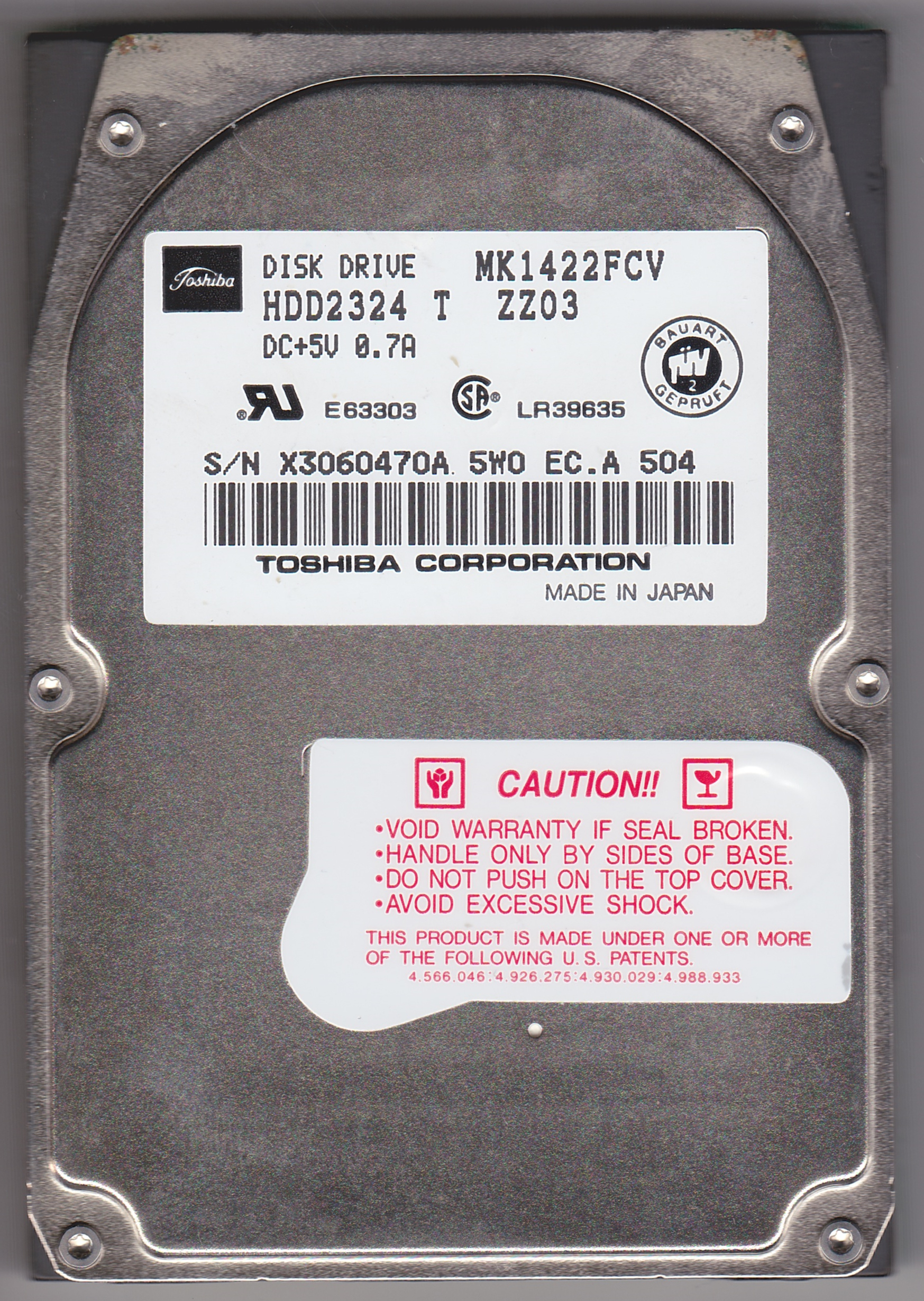
Toshiba’s bold warning labels remain, stating that this drive was manufactured in Japan. This is the case with all of Toshiba’s 2.5″ drives up until 1995, when the company would invest in a factory in the Philippines to jointly produce models from there-on. [1] The MK1422FCV’s were only produced in Japan.
This unit was produced in October 1993.

Toshiba had flipped the PCB on this drive, which is one of their first implementations of this method on a 2.5″ drive. This was a vital requirement to meet their 12.5mm target.
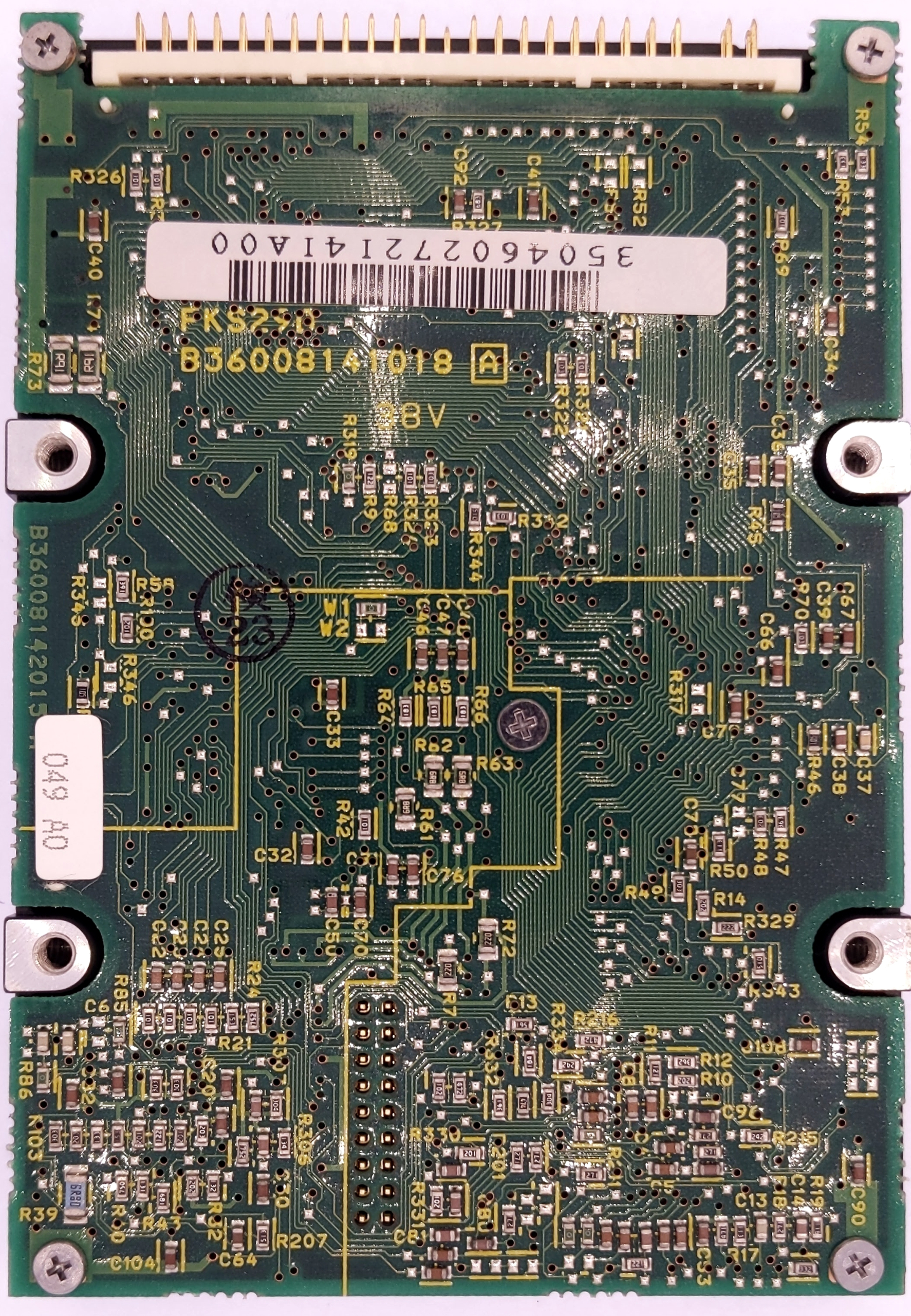
The rear of the PCB sports Toshiba’s classic yellow silkscreen, used until the mid-90’s for the majority of their hardware manufacturing.
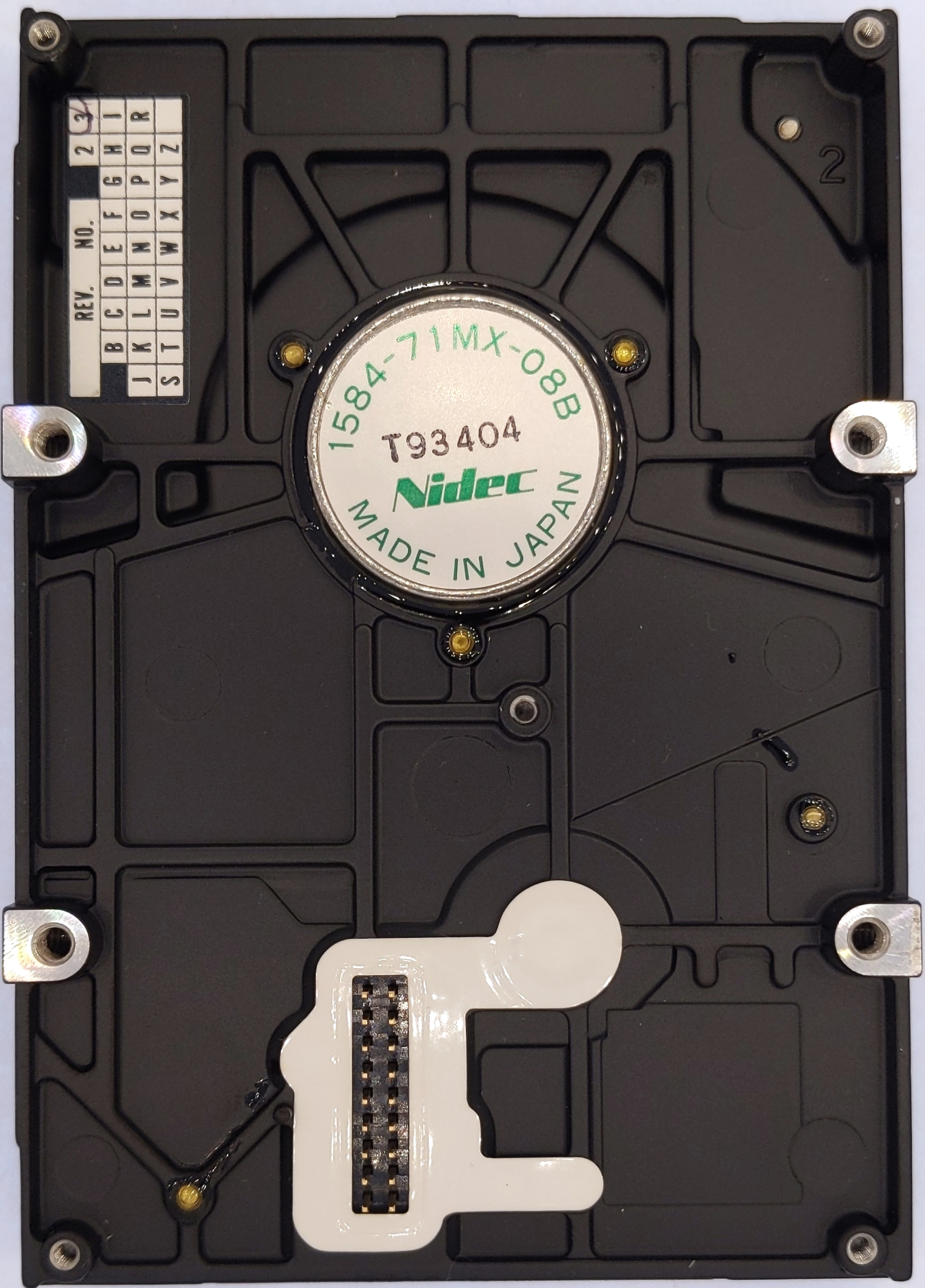
With the PCB removed, we get a look at the spindle motor vendor. It seems the bearer of bad bearings happens to be Nidec this time, with this drive being exceptionally worn. Nonetheless, it’s in perfect condition media-wise, so one can’t complain too much. The usual head-stack interface connector is present at the bottom of the drive.
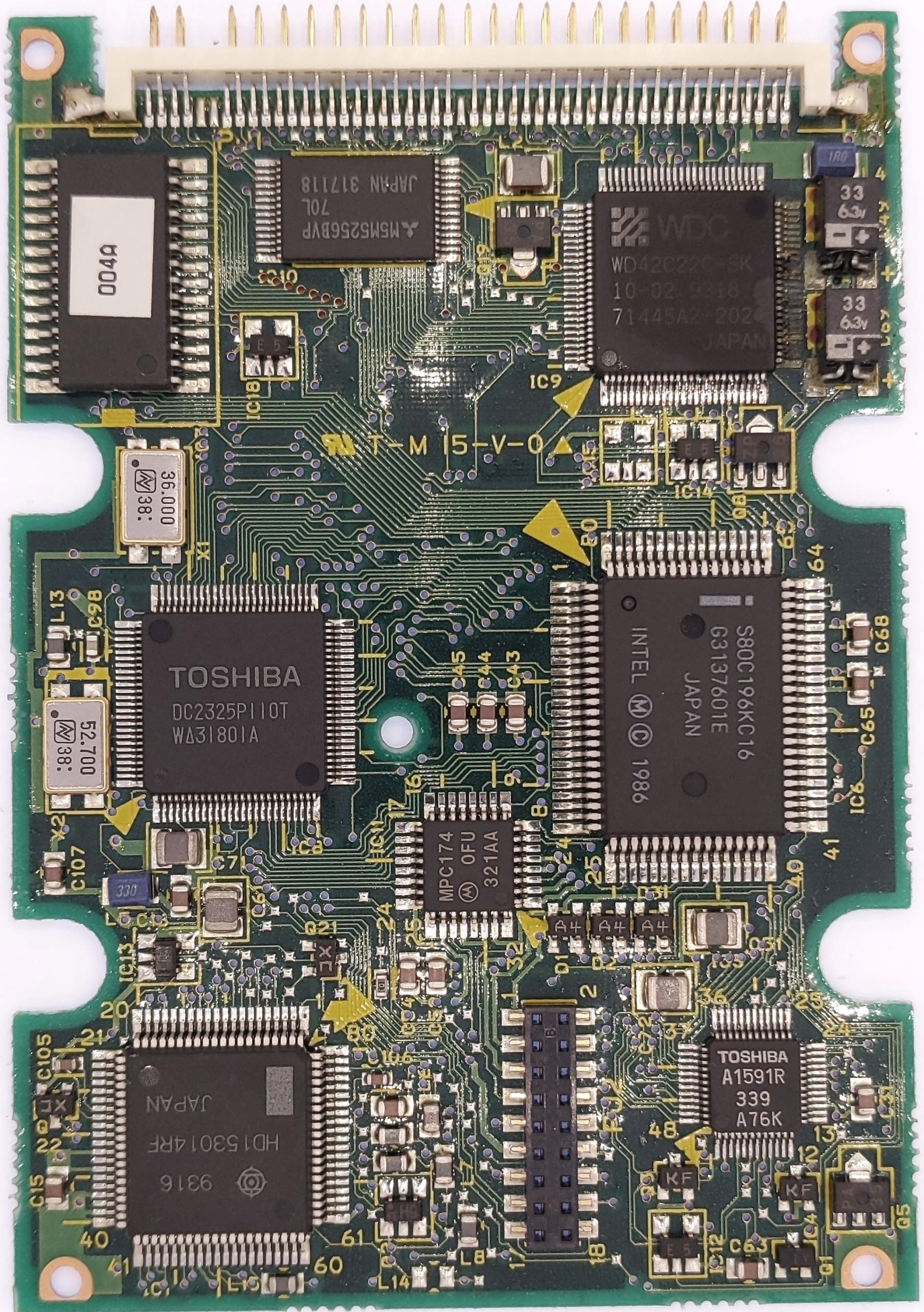
Logically, this drive shares many similarities with the MK2024FC. Perhaps this is to be expected given their firmware similarities, but it is impressive to see how Toshiba shrunk it down to allow for a flipped PCB on a 12.5mm height.
Western Digital make for an interesting brand to see with IC’s, just like on the MK2024FC, providing the interface adapter IC. The 32KB of cache is from Mitsubishi, with a few other controllers used for various supplementary functions from both Hitachi & Toshiba. The central microcontroller is from Intel, being a 16MHz, 16-bit chip, also holding internal ROM.
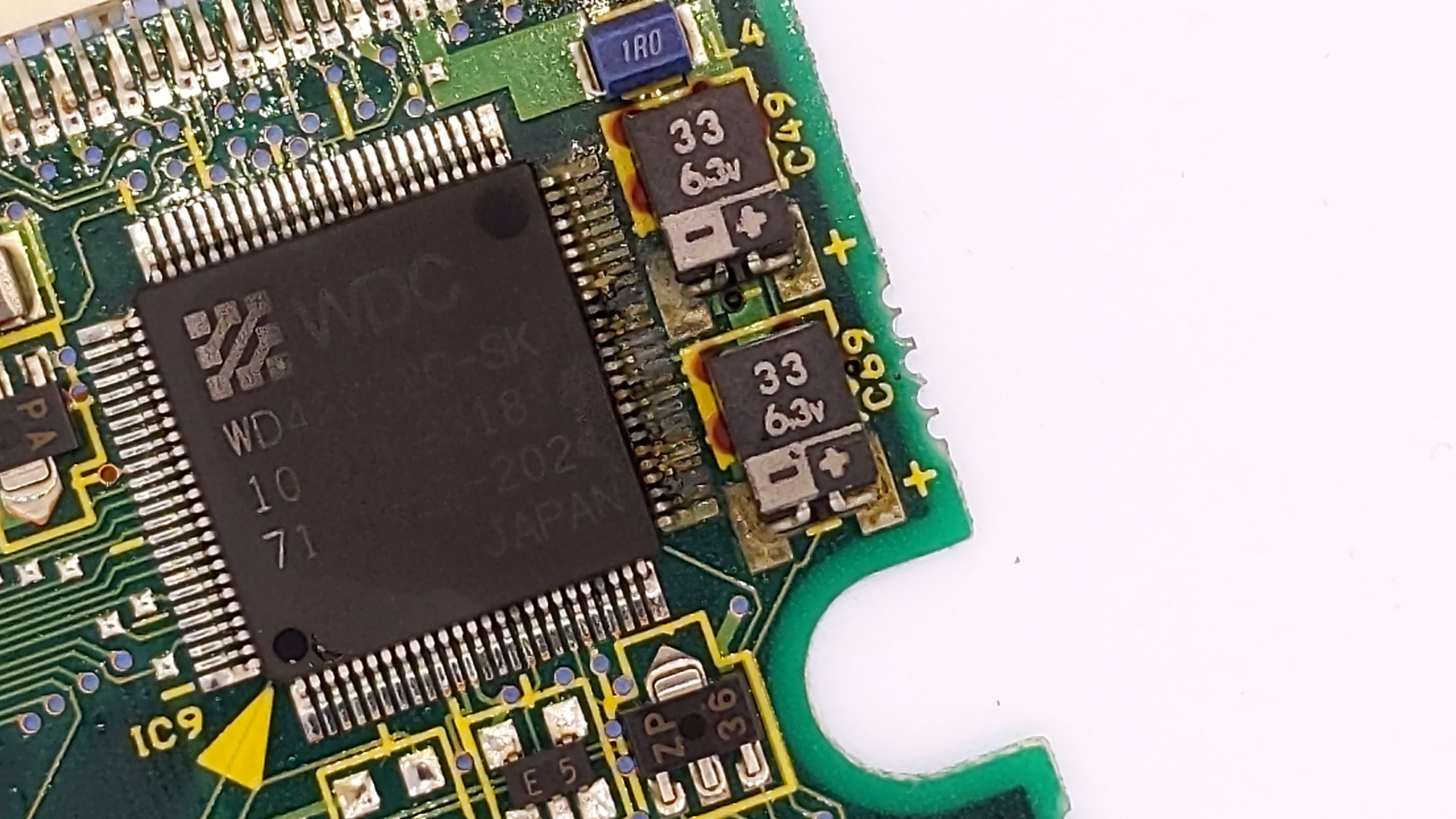
As is with many Toshiba’s of this era, the electrolytic capacitors have leaked quite badly on this board. The Western Digital interface adapter IC has recieved the brunt of the damage, requiring some clean-up to ensure this drive doesn’t fail as a result of trace rot.
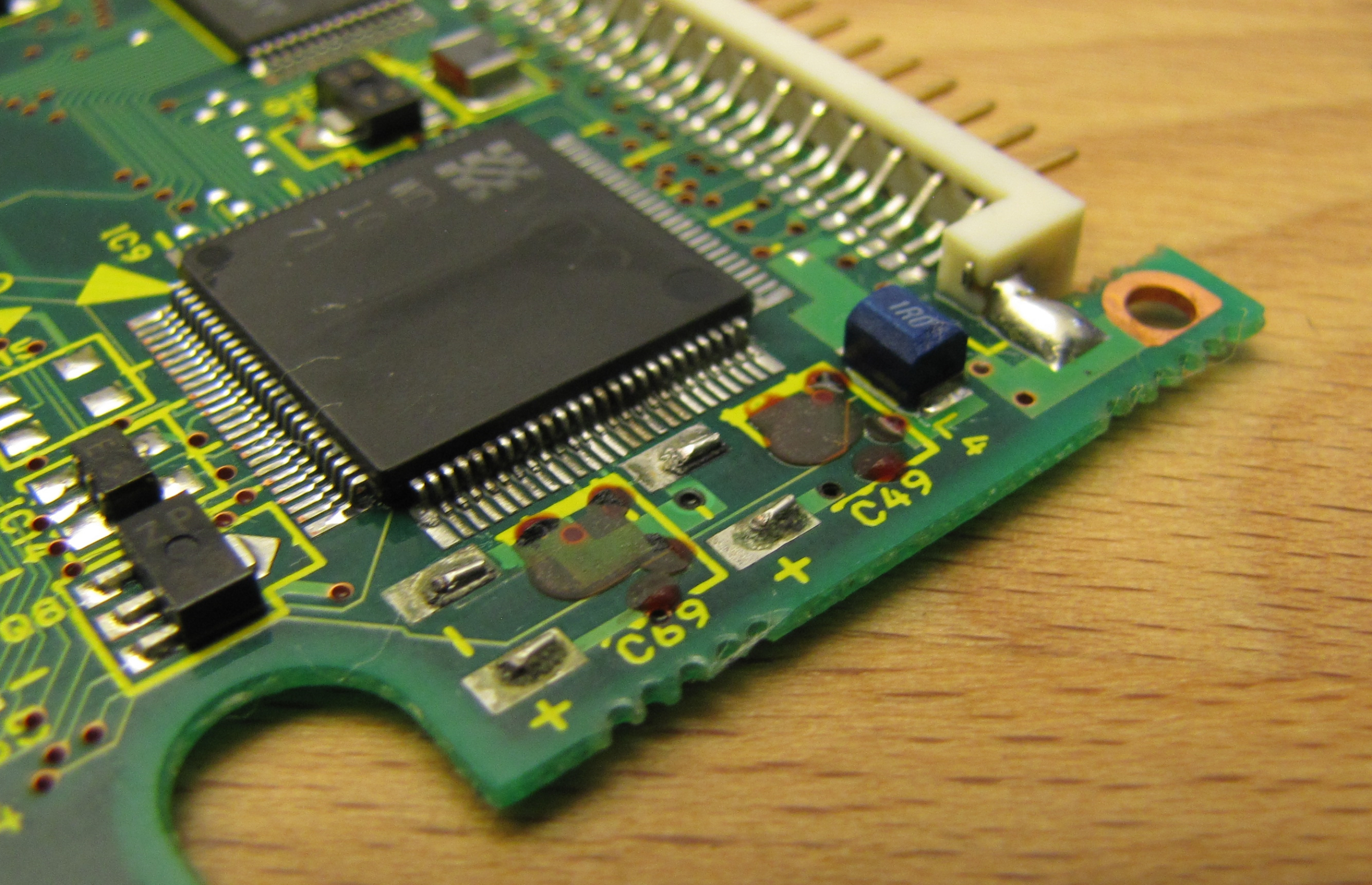
Fortunately, the damage wasn’t too deep. More clean-up will certainly be required when new capacitors are found & installed (it’s quite difficult with this form-factor), but for now the damage won’t continue to eat away at the board.
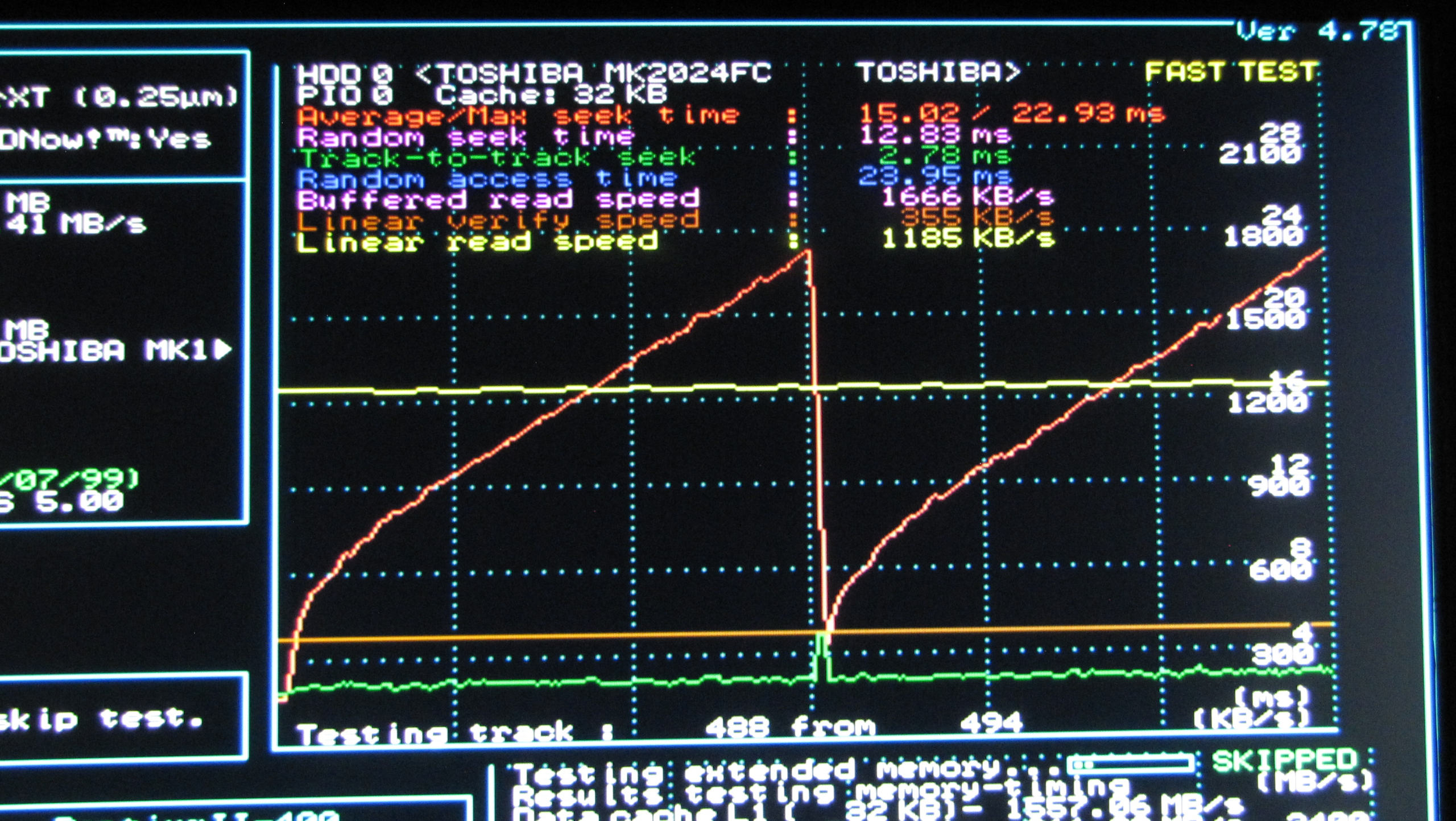
This is yet another example of a drive utilising sequential track layouts, where the drive uses each platter surface individually. This is much different compared to most drives, which utilise some form of parallelisation across multiple heads. As a result, this drive uses the first 43MB of the first surface, before moving onto the second.
An important, yet fascinating, note is that Toshiba clearly re-used firmware to such a degree that their older model MK2024FC is still part of the identification tag. Interestingly, the track pattern is entirely different between the two, with the MK2024FC being more standard compared to drives of several years later. It is certainly quite strange to have come across a drive identifying as two different models. A weird oversight on Toshiba’s behalf, perhaps? Who knows.
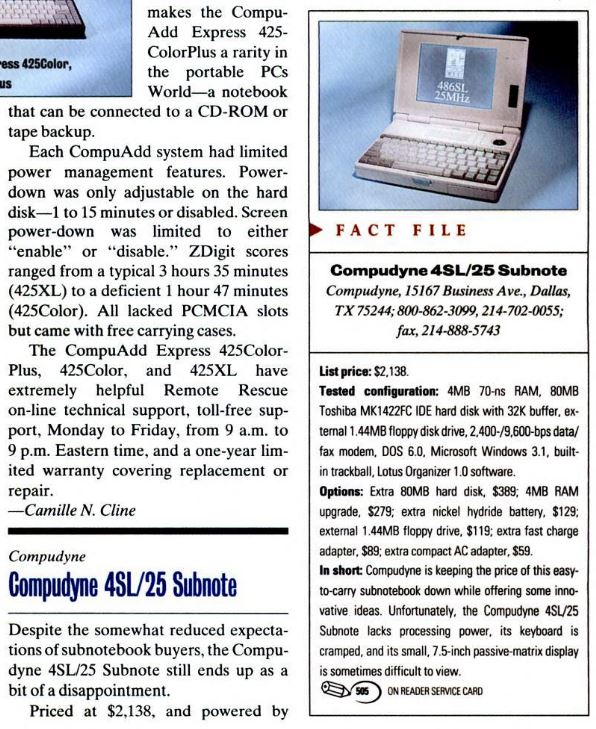
Toshiba’s advancements with both height and glass-platter mediums continue to impress, holding up incredibly well, even to the current day.
If you missed the video I made on this drive, you can find it here:
References:
[1] GRIPS – National Graduate Institute for Policy Students, Competitive Strategy of Global Firms and Industrial Clusters 1, Case Study on the Hard Disk Drive (HDD) Industry, Tomofumi Amano, Acquired from: https://www.grips.ac.jp/ Downloadable mirror: Competitive Strategy of Global Firms and Industrial Clusters 1 Case Study on the Hard Disk Drive (HDD) Industry (.pdf)
[2] PC Mag (1993) Aug 1993, 572 pages, Vol. 12, No. 14, ISSN 0888-8507, Published by Ziff Davis inc., Acquired from: https://books.google.com/books?id=H53CIZnYLZwC